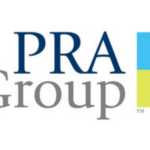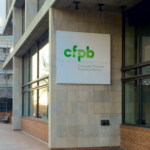A pair of professors from Southern University Law Center in Baton Rouge, Louisiana, have published a paper assessing the proposals put forth by the Consumer Financial Protection Bureau that will likely form the foundation for its forthcoming debt collection rule.
The 40-page paper goes through each of the proposals put forth by the CFPB, which cover the integrity of the information, communication practices, and consumer understanding. And while not drawing any definite conclusions, the professors did say that the increased cost of compliance may force smaller collection agencies out of the market.
“There are certainly some aspects of the proposal that are fair and, indeed, desirable – such as clarity on time, place, and manner under the Fair Debt Collection Practices Act,” said Roederick White, one of the paper’s authors and a law professor at SULC. “The collection industry has been looking for some answers on those items for many years. On the other hand, there are some other provisions that may impose too great of compliance costs on collection companies and even indirectly on the original creditor.”
The professors did not get into specifics as to how much more compliance will cost if the proposals end up becoming law, saying it will depend on “how sophisticated” agencies want to get in adopting new technology to help ease the additional compliance burden. The CFPB has held a hearing and received a report from representatives of two dozen small businesses to assess the impact that its proposals will have on smaller entities.
Collectors will have to be on the lookout for “warning signs,” both before making a communication attempt and once contact has been initiated, to make sure that debts are, in fact, valid, and that the right person is being contacted. The paper notes that many sales of debt portfolios are made “as is,” with the seller not making any guarantees as to the validity of the information contained in the portfolio. This is done to avoid being held liable if a problem arises. But that lack of accountability may cause problems for debt buyers, the professors noted.
It could ultimately harm the debt collection industry by causing original creditors to shift to collecting their own debts. On the other hand, it may just cause the industry to conform to a more transaction cost-intensive process moving forward.
The professors also pointed to the warning signs as the area that will cause the largest impact the industry.
“I think making sure that a trigger is not missed may cause companies some anxiety,” said Christopher Odinet, the other author of the paper and a fellow law professor at SULC. “While there is no obligation to investigate the accuracy of the entire debt portfolio that a collector acquires, the feeling that one might have missed a potential warning sign (and thus trigger the duty to investigate further) may create a practical and wide-ranging duty.”
And even though the CFPB has only issued an outline of proposals, which precedes a proposed rule, which precedes a final rule, collection agencies should not wait to see what the CFPB finally decides to do before making changes, the professors said.
“First and foremost, this is just a proposal,” Odinet said. “And the CFPB mentions in various places that it would like more information from affected firms on what direction it should take regarding different aspects of the plan. So I would tell companies to be active and engaged in that process – either individually or through trade/advocacy groups. I think the key to success is understanding and appreciating the CFPB’s pro-consumer perspective, while still cautioning the agency about ways that the ultimate rules might have a chilling affect on consumer credit, as well as the potential for industry consolidation.
“On the other side of the coin, I would say that companies should begin to look now at how they might invest in technologies that can make compliance easier. For instance, part of the proposal involves the sending of more notices and disclosures to the debtor, as well as tightly limiting the time, place, and manner of communications with the debtor. Technology that helps track communications and the dissemination of documentation can help make compliance easier.”









